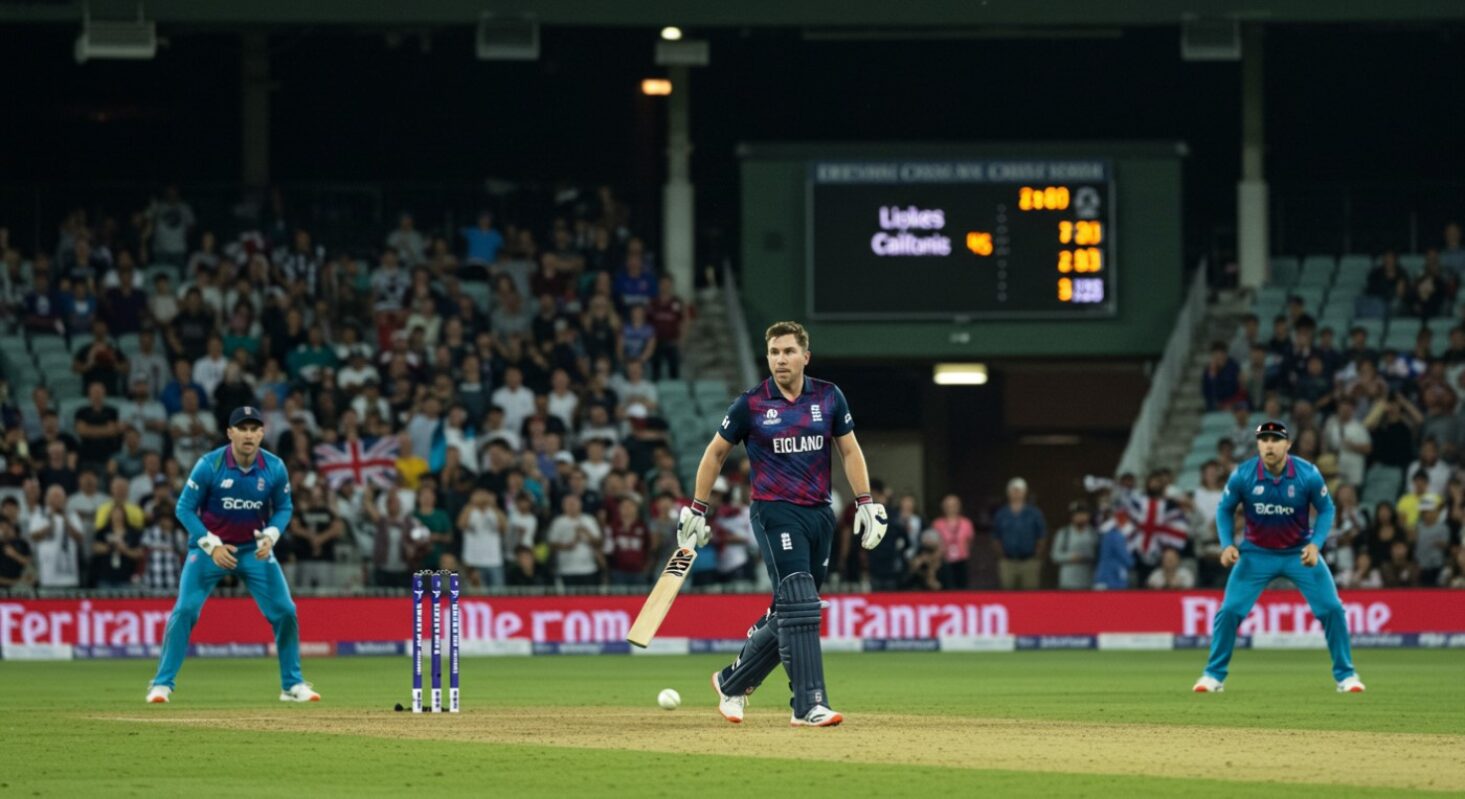
Chasing vs Setting Targets: What Cricket Statistics Reveal
Cricket fans and analysts have long debated whether it’s better to chase or set a target — especially in the T20 format. Some argue that batting first allows teams to post pressure-inducing totals, while others swear by the clarity and pacing that chasing offers. But when you strip away opinions and look at the data, a clearer story begins to emerge.
In recent years, captains have shown an increasing preference for chasing — often influenced by factors like dew, pitch behaviour, and scoreboard pressure. At the same time, some of the most dominant T20 teams in history have thrived when setting targets. This contrast raises an important question: is there really a universal advantage, or does it depend on the situation?
This article unpacks the numbers behind chasing vs setting targets, using statistical insights to explore which scenarios favour each approach. From pitch conditions to team composition and match phases, we’ll examine when and why one strategy outperforms the other — and whether today’s reliance on chasing is supported by evidence or simply trend-driven.
1. Global T20 Win Rates: The Chasing Trend Explained

Over the past decade, data from international and franchise T20 matches has shown a growing win percentage for teams chasing. In some competitions, especially those played in the subcontinent, chasing teams win over 60% of the time. This sharp imbalance has led many captains to automatically opt to bowl first after winning the toss — but is the edge as consistent as it seems?
Part of this trend can be attributed to modern batting depth. Teams now have power hitters down to number eight, making it easier to keep up with rising required run rates. Moreover, chasing teams benefit from knowing exactly what’s needed, allowing them to plan overs more precisely and pace their innings accordingly.
Conditions, especially dew in night matches, often tilt the odds too. A damp ball makes it harder for bowlers to grip and spinners to extract turn, handing an advantage to chasing teams in evening fixtures — particularly in parts of India and the UAE.
While these win rates clearly favour chasing, they don’t tell the whole story. As we’ll explore in later sections, the true value in the chasing vs setting targets debate lies in the context: who’s playing, where, and when.
2. Powerplay Performance: Who Gains More from a Flying Start?
The powerplay often sets the tone for a T20 innings. But does a quick start hold more value when chasing or when setting a target? Statistically, the answer is nuanced. Teams batting first and scoring 50+ in the powerplay tend to win more than 60% of the time. That early dominance builds pressure, inflates the projected score, and forces the opposition to take more risks upfront in response.
However, when chasing, a blistering powerplay can also break the back of the target. The difference lies in risk appetite. Teams batting first can afford to go hard, knowing they have 20 overs regardless of outcome. In contrast, chasing teams may hold back slightly to protect wickets, especially on tricky surfaces.
Interestingly, teams that chase well tend to be more consistent in the powerplay, scoring 40–45 without many losses. They build platforms rather than explode. In contrast, successful teams setting targets often gamble — and when it works, they end up with match-defining totals.
This suggests that in the chasing vs setting targets discussion, the powerplay is more forgiving for teams batting first. The freedom to take risks early without scoreboard pressure may explain why explosive starts tend to favour the side setting the total.
3. Middle Overs Consistency: The Great Equaliser
In T20 cricket, the middle overs — between 7 and 15 — are often where games drift or tighten. Teams that navigate this period efficiently tend to win more frequently, regardless of whether they’re chasing or setting. What the numbers reveal is that while this phase may lack fireworks, it’s statistically where matches are most often set up or lost.
Batting first, this phase is about consolidation and laying the groundwork for a strong finish. Teams averaging 7+ runs per over in the middle without losing more than two wickets are statistically far more likely to post 170+, a threshold that dramatically boosts win probability.
Chasing sides, on the other hand, rely on this phase to control the asking rate. Slipping below six runs per over here creates unbearable pressure at the death. Consistent middle-over partnerships with smart rotation and selective hitting — especially against spin — tend to produce smoother chases.
One key insight in the chasing vs setting targets debate is that middle-over efficiency often levels the playing field. It’s less about the situation and more about execution. Teams that get these eight overs right give themselves a fighting chance, no matter the broader context.
4. Death Over Firepower: When It Really Pays Off

The closing overs — from 16 to 20 — are where games swing wildly and reputations are made. Death overs are often seen as the make-or-break phase, and rightly so. But are they more important when setting a target or chasing one?
The numbers suggest that death-over effectiveness has greater upside when setting a target. A final flourish that takes a score from 160 to 185 increases win probability significantly — especially in conditions where chasing becomes tricky. Strike rates over 200 in this phase can turn a par score into a winning one.
Conversely, in a chase, death-over brilliance is often about survival and nerve. While chasing teams can win games in this phase, especially with set batters at the crease, they’re more prone to panic under high pressure. Even small required rates — 10 or 11 per over — become daunting if wickets are down or if finishers aren’t set.
When comparing chasing vs setting targets, it becomes clear that death over dominance is more reliably useful for teams batting first. It turns momentum, builds scoreboard pressure, and allows bowlers to defend with confidence — especially if the pitch deteriorates under lights.
5. Impact of Toss and Dew: The Unseen Variables
In evening T20 matches, the toss often feels like a match-winner on its own. Captains overwhelmingly choose to field first — and for good reason. Dew is a game-changing factor, particularly in South Asia and the Middle East. A wet ball becomes harder to grip, reducing spin and making slower balls far less effective. That naturally gives chasing teams a considerable advantage.
Looking at win percentages in tournaments like the IPL or Asia Cup, the chasing side wins nearly 65% of matches played under heavy dew. Bowlers struggle to maintain control, and even modest totals become difficult to defend. Spinners, in particular, see their economy rates spike, and wrist spinners become reluctant to bowl their variations.
That said, not every chasing advantage is down to the elements. Some teams still defend well under lights, often relying on extra pace or disciplined seamers who can hit hard lengths. This makes the toss influential but not definitive.
In the broader debate around chasing vs setting targets, conditions like dew introduce bias into the stats. While they favour chasing, it’s not a universal truth — and understanding venue-specific behaviour is essential to reading the data correctly.
6. Run Rate Pressure and Psychological Collapse
One of the most fascinating aspects of T20 chases is the psychological pressure that builds as required run rates climb. Even with wickets in hand, chasing sides frequently crumble once the asking rate crosses 12 or 13 an over. The fear of failure tends to override planning, leading to poor shot selection and collapses.
Statistically, chasing teams that need more than 10 runs per over for the final five overs only win about 30% of the time — even with batters set. As the run rate rises, so does the likelihood of dot balls, mistimed slogs, and poor communication between partners. Panic spreads quickly.
On the flip side, teams setting targets have no such looming figure to chase. They build pressure through scoreboard freedom, knowing any additional runs over par force chasing sides into risky territory. Even 10 extra runs can mentally corner an opponent.
In the chasing vs setting targets discussion, this psychological angle is often overlooked. Chasing might seem easier on paper, but the mental toll of watching the required rate rise steadily makes even attainable targets feel distant — and that’s where captains and finishers are truly tested.
7. The Role of Anchors: Safety Nets or Scoring Blocks?

Anchors — the batters who hold one end while others attack — divide opinion in T20 cricket. Statistically, their role looks very different depending on whether a team is chasing or setting a target. When batting first, an anchor who scores 40 off 35 balls can provide vital stability before finishers explode. That same innings, during a chase, often becomes a liability.
Data shows that when chasing modest totals (140–160), an anchor role can help — ensuring wickets in hand for the final push. But once the target exceeds 180, teams with slow anchors tend to fall short. The lack of momentum in the middle overs leaves too much to do later, even for elite finishers.
When setting a total, however, a calculated anchor is more useful. A batter who rotates strike, sees off tricky bowlers, and sets up the platform for a big final five overs contributes to consistently competitive scores.
This makes the role of anchors a strategic decision, not a fixed one. In the debate around chasing vs setting targets, the anchor is a contextual asset — valuable when used smartly, but potentially disastrous when miscast.
8. Bowling Discipline and Extras: Who Pays the Higher Price?
Discipline in the field becomes even more valuable in T20s, where every run matters. But does it matter more when defending or chasing? Statistically, teams that concede more than 10 extras while defending a total lose over 60% of the time. Those extras don’t just inflate the score — they break rhythm and reduce the margin for error during key phases.
When setting a target, bowling discipline keeps pressure on the chasing side throughout the innings. A single wide in the final over can tilt a tight match. A no-ball with a free hit not only offers a run but a high-percentage scoring opportunity.
Chasing teams, by contrast, can afford to concede a few more in the field — their target is already fixed. That said, poor fielding or indiscipline early in the match can change the tone dramatically, especially if the batting side capitalises with a big total.
The statistical evidence suggests that in chasing vs setting targets, discipline with the ball is disproportionately more critical for the side defending. Any generosity offered early usually needs to be clawed back later — and in a format this short, there’s rarely enough time to do so.
9. Historical Finals: What the Big Games Reveal
When the pressure peaks in T20 finals and knockout matches, does one approach consistently outperform the other? Surprisingly, history shows that setting targets often wins out on the biggest stage. In IPL finals, for instance, more teams have lifted the trophy after batting first than chasing.
This trend is echoed in World Cup T20 finals and high-stakes eliminators. The logic is simple: in pressure games, scoreboard pressure is real. Batters chasing in finals are often more cautious early on, leading to slow starts and increased pressure in the final overs.
Teams setting targets can also plan more freely, bat with clear intent, and force mistakes by creating a psychological cushion. Captains like MS Dhoni and Rohit Sharma have backed this approach in big matches, valuing runs on the board when everything’s at stake.
In the wider chasing vs setting targets conversation, it’s clear that context matters. In bilateral matches or league games, chasing may offer more flexibility. But when the stakes are highest and the pressure is suffocating, setting a total and letting nerves do the rest has proved a winning formula more often than not.
Conclusion: Rethinking the Chasing vs Setting Targets Debate

The numbers don’t lie — but they don’t tell the full story either. When comparing chasing vs setting targets in T20 cricket, the data reveals clear trends: chasing is statistically dominant in league-stage games and in venues with dew, while setting targets tends to shine under high-pressure knockout conditions. Both approaches have strengths — but context, team strategy, and execution determine the outcome far more than toss bias or blind preference.
Modern cricket has understandably leaned towards chasing, favouring known targets and reactive pacing. But this shift has also created complacency. Teams now often hesitate to post totals with bold intent, fearing that setting targets is a disadvantage. In reality, a well-structured innings, combined with sharp fielding and discipline, can still turn a first-innings score into a match-winner.
Captains and analysts should look deeper than win percentages. They must ask: What’s the pitch doing? Who are we up against? Are our finishers in form, or our spinners thriving? Only then can the right call be made.
Ultimately, chasing vs setting targets isn’t about which is better. It’s about which fits the moment — and how well a team adapts once that choice is made.





